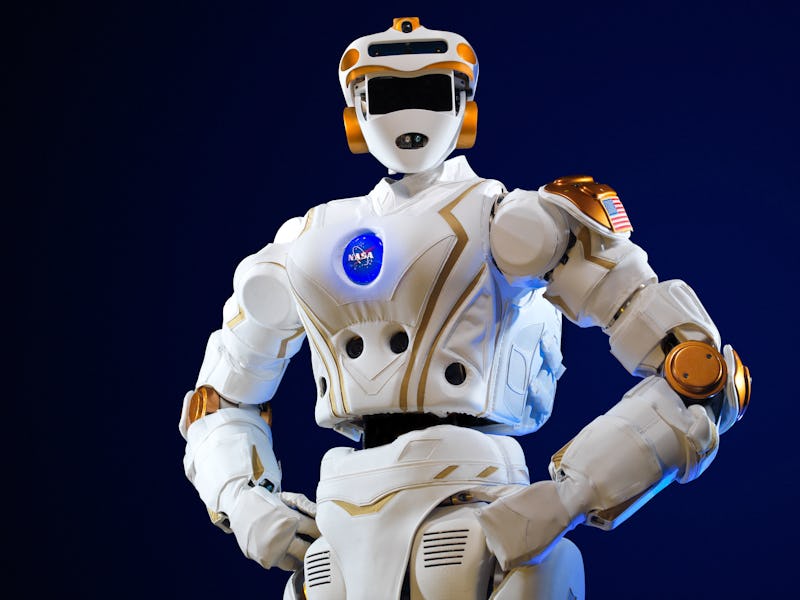The Cold of Deep Space Will Be No Match for NASA's Robots

Robots are expensive. The materials used to create humanoid robots in particular make them challenging to mass-produce, and even if a company builds on a larger scale, parts are bound to break. NASA announced Monday that it wants to solve both those problems with one thing: gears made from metallic glass.
The space agency announced that metallic glass, which was developed in the ‘60s, offers many benefits over the metal used in gears now. For one, the gears are molded as if they were made of plastic. This allows companies to mass-produce vital components used by humanoid robots to make sure their joints don’t wobble.
This is a Boston Dyamics ATLAS robot.
The gears could make robots more common. “Mass producing strain wave gears using [metallic glass] may have a major impact on the consumer robotics market,” NASA’s Douglas Hoffman said. “This is especially true for humanoid robots, where gears in the joints can be very expensive but are required to prevent shaking arms.”
Metallic glass can also withstand very, very cold temperatures. NASA announced its gears “demonstrated strong torque and smooth turning without lubricant” at -328 degrees Fahrenheit. Manufacturers can take advantage of this resilience to devote power to critical systems instead of heating lubricant.
Here the metallic glass is subjected to frigid temperatures.
This will make these gears useful on cold planets — and on Earth. Tech doesn’t like the cold, which is why your smartphone dies whenever the temperatures drop too far below freezing, and this metallic glass could help robots function even if they get chilly.
Advancements like this are part of the growing interest in humanoid robots. Sometimes researchers mimic the human body to solve mechanical problems, like the University of Tokyo did when it made a robot that sweats to keep its systems cool.
Kengoro is made up of 108 motors.
Other times robots far surpass us. Humans can’t function at -328 degrees Fahrenheit. We’d freeze to death (which is not a fun process) at higher temperatures. “Humanoid” doesn’t have to mean “as human-like as the hosts in Westworld, even if those robots could be real some day.
Even if NASA manages to build ultra-durable robots that can be produced en masse, or at least create the tech that will allow other companies to do so, humanoid robots have a ways to go before they can go all Terminator on us.
Not quite.
Hell, most can’t even balance on one leg for very long:
It's no ballerina.